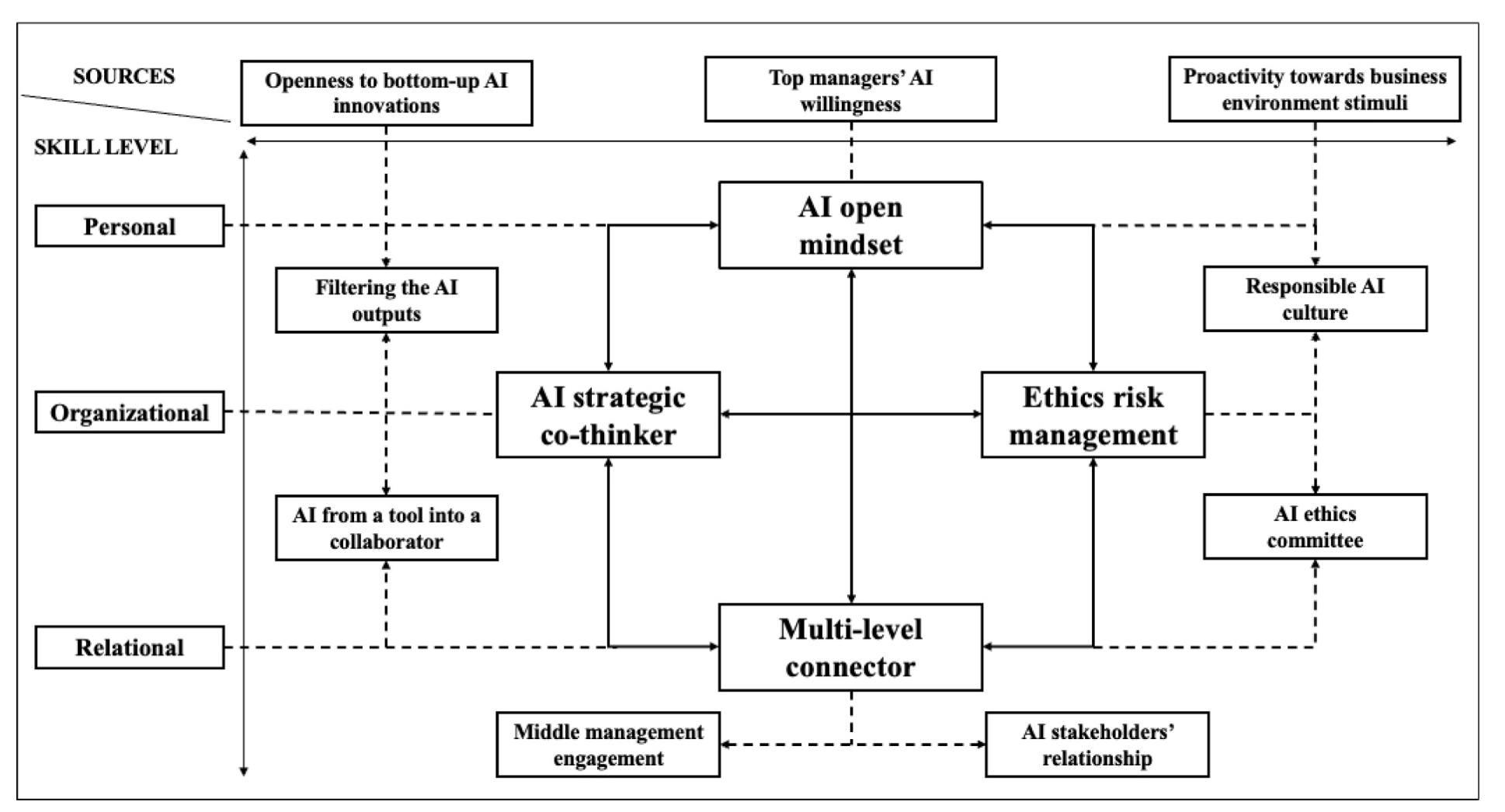Every few years, a phrase catches fire in leadership circles and refuses to go out. “People don’t leave jobs; they leave managers” is one of those lines. It appears in exit interviews, HR presentations, and LinkedIn posts, repeated as gospel. It sounds caring. It sounds wise. It feels true to anyone who has worked for a boss who drained the joy out of a day.
The phrase’s origins are uncertain. It is often linked to Gallup’s research on employee engagement, though no single report contains the exact line. The idea draws loosely from studies showing that supervisors influence engagement and retention, but the slogan itself has no clear author. Like many leadership myths, it emerged not from scholarship but from sentiment.
Its appeal is obvious. It offers a simple villain and a simple fix: if people leave managers, then better managers mean lower turnover. The story is neat. It is also incomplete. People leave managers, but they also leave systems, workloads, mismatched values and cultures that make good management impossible.
Research shows that turnover is rarely caused by one thing. Mobley, Horner and Hollingsworth (1978) described leaving as a process that unfolds through dissatisfaction, search and evaluation. Later studies found that job design, organisational justice, career opportunity and person–role fit all play roles (Hom et al., 2017). The manager matters, but they are only one actor in a wider system.
The phrase persists because it feels human. We remember faces, not systems. When we recall leaving a job, we recall the conversation that broke our trust or the silence that made us feel invisible. The manager becomes the symbol of everything that went wrong. But as with most leadership folklore, what feels true obscures what is true. The real story is not just about individuals, but about the conditions that shape how people experience work.
Why the quote endures
The line endures because it offers a comforting narrative. It personalises a complex issue and gives leaders something tangible to fix. It tells us that retention depends less on systems and more on human connection. That story feels hopeful. It suggests that with empathy and skill, a single manager can transform the experience of work.
It also flatters leadership. It places managers at the centre of organisational life, implying that engagement begins and ends with them. Gallup’s State of the American Workplace (2016) report, which found that managers account for up to 70 percent of variance in engagement scores, reinforced this belief. For many leaders, the message was irresistible: if engagement fails, the problem must be personal.
There is comfort in that clarity. It keeps complexity at bay. When people leave, the loss feels less random. We can attribute it to one relationship rather than an entire system. But this is a form of psychological shorthand. It allows organisations to avoid examining the harder, structural questions about workload, fairness or purpose.
Edward Deci and Richard Ryan (1985) showed that motivation thrives when autonomy, competence and relatedness are present. A manager can influence these, but not control them. Systems, policies and culture set the boundaries of what leadership can achieve. William Kahn (1990) later found that engagement depends on psychological safety and meaningfulness, both outcomes of climate as much as of character.
The quote survives, then, because it resonates emotionally while simplifying intellectually. It names something real: the importance of leadership behaviour. But it strips away context and turns a systemic pattern into a personal story, which makes it easier to remember and harder to change.
What the research actually shows
When researchers look past slogans and study why people leave, the picture becomes both clearer and more complex. Turnover is rarely a momentary decision; it accumulates through unmet needs and silent disappointments.
Hackman and Oldham’s (1976) Job Characteristics Model identified five features that sustain motivation: skill variety, task identity, task significance, autonomy and feedback. When these are absent, no amount of managerial charm can compensate. People often leave because the work itself offers too little meaning or growth.
Later evidence reinforced that fairness, recognition and alignment with values predict turnover as strongly as leadership style (Hom et al., 2017). A supportive manager can buffer these effects but cannot erase them. Wrzesniewski et al. (1997) found that employees who saw their work as a calling were less likely to leave, regardless of pay or title. Purpose, not personality, drives endurance.
Even Gallup’s data suggest nuance. Managers shape engagement, but retention is most strongly linked to clarity, recognition, development and a sense of voice (Gallup, 2016). Each of these is influenced by management but anchored in the broader system. Culture amplifies or constrains a manager’s impact.
The evidence is consistent: people leave when the conditions of work no longer support their need for competence, autonomy and belonging. The manager is part of that story, but never the whole of it.
When people really do leave managers
There are moments when the saying is painfully true. People do leave managers who erode trust, ignore effort or create fear. They leave when questions are met with silence or ideas are treated as threats. In those cases, the manager embodies what is broken.
Psychological safety is central here. Amy Edmondson (2018) defines it as the shared belief that it is safe to speak up with ideas or mistakes. In low-safety environments, learning stops and people begin to disengage, first emotionally, then physically. They may not resign immediately, but they start planning their exit. Fear becomes the silent architect of turnover.
Christine Porath and Christine Pearson (2013) found that even small acts of disrespect, such as interruptions, dismissive comments or exclusion, can double the likelihood of quitting. The emotional residue of incivility accumulates until leaving feels like self-protection.
Trust, fairness and open communication all shape whether people stay or go. When those are missing, departure becomes a matter of dignity rather than ambition. Yet even these failures are rarely isolated. They often mirror pressures the manager is under, such as impossible targets, contradictory demands or cultures that reward compliance over care.
When leaders assume people leave because of a single boss, they miss the more profound lesson. Managers are part of a system that either supports or undermines their ability to lead well.
The systemic context
When people say they left a manager, they often mean they left the system that manager represented. Beneath every difficult boss lies a web of incentives and norms that shape behaviour. Systems create the conditions in which leadership either flourishes or fails. Peter Senge (1990) warned that organisations often treat symptoms rather than structures. We blame individuals for outcomes the system produces. A controlling manager may work in a culture that punishes error; a conflict-averse one may operate in a climate where dissent damages careers. These are not personal flaws but adaptive responses.
Mary Parker Follett (1924) made the same point decades earlier. She saw management as “the art of getting things done through people” by fostering cooperation rather than control. Authority, she argued, is always relational and depends on shared purpose. When organisations design work as a series of rules and approvals, they remove the very conditions that allow cooperation to thrive.
Managers are often trapped in the middle of these tensions. They carry the emotional load of decisions they did not make, enforcing policies they did not design. When organisations claim that people leave managers, they risk blaming the symptom and protecting the cause. If the workload is unmanageable or recognition is scarce, even skilled leaders will struggle to keep people engaged.
Lasting change comes from redesigning the system, not repairing individuals. When structures, rewards and values are aligned, good management becomes easier and good people are more likely to stay.
Towards a more useful framing
If the slogan oversimplifies, a more constructive view is to see resignations as indicators of system health. Every departure tells a story about alignment between what was promised and what is lived. When those match, people stay. When they diverge, trust erodes.
A better phrase might be: people leave when the promise of work no longer matches the experience of it. That gap can arise from stagnation, contradiction or neglect. The goal for leaders is not to assign blame but to listen for what the gap is trying to say.
Leaders must look in two directions at once. Upwards, to examine how policies, incentives and structures shape behaviour. Downwards, to observe how daily habits reinforce or resist those same forces. Change begins when leaders see themselves as part of the system, not apart from it.
Three reflective questions help:
-
What signals do people here receive about what truly matters?
-
How do our systems make it easier or harder for good managers to act well?
-
Where do we make it difficult for people to feel competent, connected or valued?
Such questions reframe retention as a design challenge rather than a disciplinary one. When systems, stories and leadership behaviour align, people stay because the experience of work still feels honest.
Closing reflection – what this means for leaders
It is easy to repeat the phrase and feel wise. It affirms our faith in leadership and our hope that behaviour can fix structure. But people rarely leave because of one person. They leave when purpose, fairness or respect fall out of alignment.
Leadership begins with closing those gaps. Attention is the first act of repair: noticing what we reward, what we tolerate and what our silences say. Every decision signals what matters. When those signals match our stated values, we build the trust that makes people want to stay.
Managers make a difference, but not in isolation. Their influence depends on the system around them, the space they are given, the pressures they carry and the values they serve. Departures are not just personal failures; they are feedback from the system.
Perhaps it is time to retire the slogan and adopt something closer to the truth:
People do not leave managers. They leave conditions that make good management impossible.
The invitation for leaders is to shape those conditions with care, creating workplaces where respect is routine, meaning is visible and staying feels like a genuine choice.
Do you have any tips or advice on how to ensure that people do not leave, thinking it is the manager’s or leaders’ fault?
What has worked for you?
Do you have any recommended resources to explore?
Thanks for reading!
Sources
Deci, E. L. and Ryan, R. M. (1985) Intrinsic motivation and self-determination in human behavior. New York: Plenum Press.
Edmondson, A. C. (2018) The fearless organization: Creating psychological safety in the workplace for learning, innovation and growth. Hoboken, NJ: Wiley.
Follett, M. P. (1924) Creative experience. New York: Longmans, Green and Co.
Gallup (2016) State of the American Workplace. Washington, DC: Gallup.
Hackman, J. R. and Oldham, G. R. (1976) ‘Motivation through the design of work: Test of a theory’, Organizational Behavior and Human Performance, 16(2), pp. 250–279.
Hom, P. W., Lee, T. W., Shaw, J. D. and Hausknecht, J. P. (2017) ‘One hundred years of employee turnover theory and research’, Journal of Applied Psychology, 102(3), pp. 530–545.
Kahn, W. A. (1990) ‘Psychological conditions of personal engagement and disengagement at work’, Academy of Management Journal, 33(4), pp. 692–724.
Mobley, W. H., Horner, S. O. and Hollingsworth, A. T. (1978) ‘An evaluation of precursors of hospital employee turnover’, Journal of Applied Psychology, 63(4), pp. 408–414.
Porath, C. and Pearson, C. (2013) ‘The price of incivility’, Harvard Business Review, 91(1–2), pp. 115–121.
Senge, P. M. (1990) The fifth discipline: The art and practice of the learning organization. New York: Doubleday.
Wrzesniewski, A., McCauley, C., Rozin, P. and Schwartz, B. (1997) ‘Jobs, careers and callings: People’s relations to their work’, Journal of Research in Personality, 31(1), pp. 21–33.





Leave A Comment